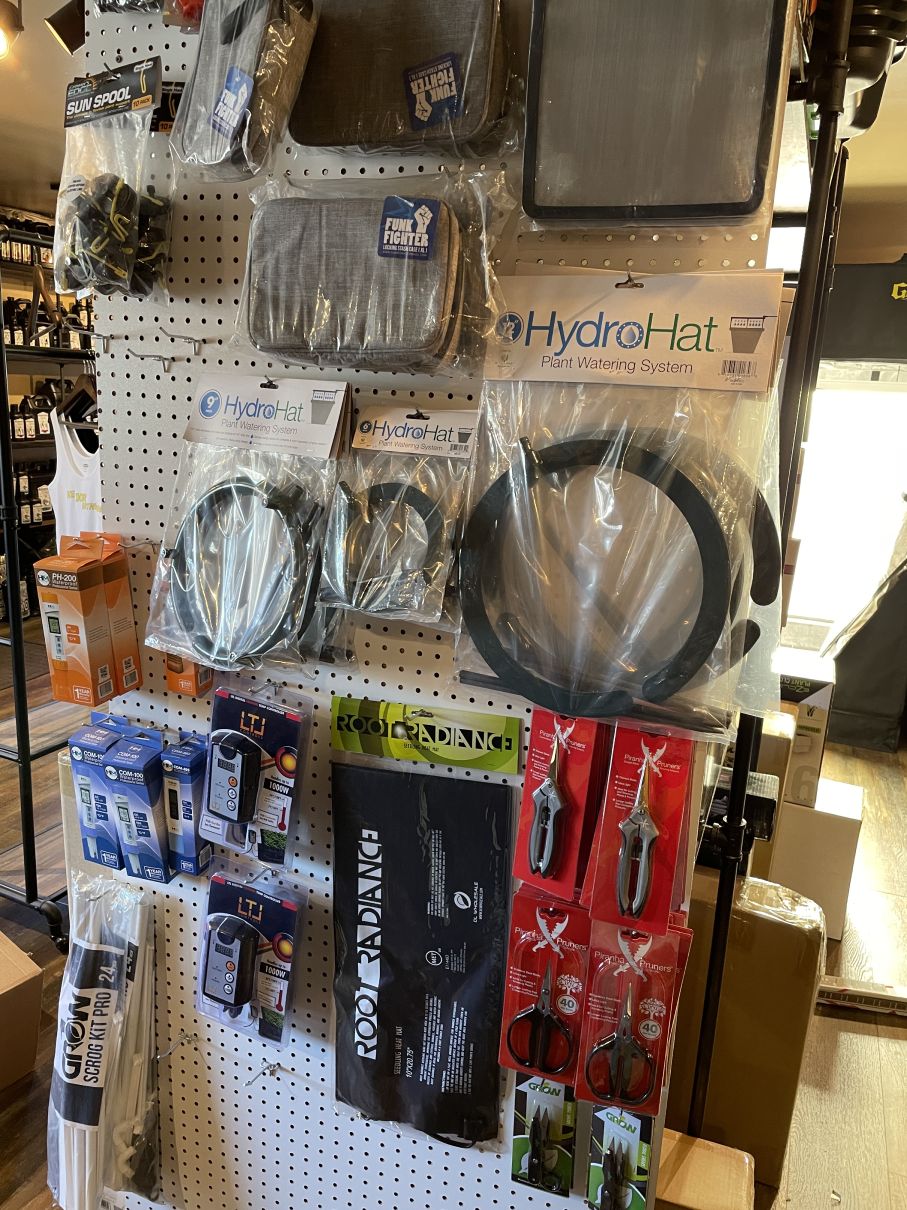Using the Power of Hydroponics: a Deep Study Makes Use Of and Various Types
In the realm of modern farming, hydroponics has actually become an approach that challenges standard farming methods by providing a water-efficient and space-saving option. The use of hydroponic systems opens up a world of opportunities for cultivating plants in varied settings, ultimately affecting food manufacturing and sustainability. As we navigate via the elaborate landscape of hydroponics, exploring its different kinds and applications, a deeper understanding of its possible to transform farming methods and address global food safety problems starts to unfold.
Benefits of Hydroponic Farming
Hydroponic farming offers many benefits over conventional soil-based agriculture. One of the main advantages is water effectiveness; hydroponic systems use up to 90% much less water compared to standard farming techniques.
Moreover, hydroponic farming permits higher control over nutrient levels, resulting in faster plant development and greater yields. By giving important nutrients directly to the plant origins, hydroponic systems promote healthier and more robust plant advancement. Furthermore, the regulated atmosphere of hydroponic systems lessens the threat of diseases and insects, lowering the requirement for harmful chemicals and herbicides.

Usual Sorts Of Hydroponic Systems
One prevalent kind is the Deep Water Culture (DWC) system, where plant origins are immersed in a nutrient solution. The Ebb and Flow system, additionally understood as Flood and Drain, occasionally floods the plant origins with nutrient option before draining it. Wick systems, the easiest type of hydroponics, make use of a wick to passively supply vitamins and mineral option to the plant origins.
Nutrient Film Strategy (NFT) System

Among the crucial advantages of the NFT system is its water performance. The Indoor Earthworm. Given that the nutrient remedy is recirculated in a shut system, this method makes use of significantly less water compared to traditional dirt farming. In addition, the NFT system is space-efficient, making it suitable for interior farming or in locations with limited space for conventional agriculture
Nonetheless, the NFT system requires cautious monitoring and upkeep to guarantee the continual circulation of water and nutrients. Any disruption in the circulation can rapidly affect plant wellness. On the whole, the NFT system supplies a effective and lasting method to grow plants hydroponically, especially for plants that grow in well-oxygenated root settings.
Deep Water Culture (DWC) System
Relocating from the Nutrient Movie Strategy (NFT) system, the Deep Water Culture (DWC) system is a hydroponic method that entails putting on hold plant roots directly in a her response nutrient service. Unlike NFT, where roots are continually revealed to a slim movie of nutrient service, DWC plants have their roots immersed in a storage tank loaded with aerated nutrient water. The origins hang in the nutrient service, enabling for direct uptake of water and essential nutrients.
One of the key advantages of the DWC system is its simpleness and low upkeep requirements. DWC systems need appropriate oygenation to prevent root rot and guarantee optimal nutrient absorption.
Aeroponic System
A cutting-edge method in hydroponics cultivation, the Aeroponic System makes use of a misting or misting system to provide nutrients directly to plant roots put on hold airborne. This system is understood for its ability to advertise rapid growth and effective nutrient uptake because of the straight shipment of nutrients to the origins, enabling the plant to focus its energy on development as opposed to looking for nutrients. In an aeroponic configuration, plants are typically housed in a shut setting where the origins are intermittently misted with a nutrient service. This misting cycle ensures that the roots receive adequate oxygen, promoting healthy and balanced origin development and general plant development.
One of the vital advantages of aeroponics is its water efficiency, as the system utilizes significantly less water contrasted to conventional soil-based growing techniques. Furthermore, the accurate delivery of nutrients directly to the origins can cause greater yields and faster growth rates. While aeroponics can be much more complicated to establish and preserve contrasted to other hydroponic systems, its potential for increased plant growth and effectiveness makes it a prominent selection for hydroponic lovers and commercial growers looking for ideal results.
Verdict
Finally, hydroponic farming uses various benefits and various kinds of systems to select from. The Nutrient Movie Method (NFT) system, Deep Water Culture (DWC) system, and Aeroponic system are amongst the most common approaches made use of in hydroponics. Each system has its very own benefits and constraints, making it necessary for farmers to very carefully consider their needs and choices prior to selecting one of the most appropriate system for their crops.
Unlike various other hydroponic systems where plants are immersed in a nutrient option, in the NFT system, the origins are revealed to the water only in a why not find out more superficial film.Moving from the Nutrient Film Method (NFT) system, the Deep Water Society (DWC) system is a hydroponic approach that includes suspending plant origins directly in a nutrient remedy.An ingenious technique in hydroponics cultivation, the Aeroponic System uses a fogging or misting system to provide nutrients straight to plant origins suspended in the air. The Nutrient Movie Strategy click to find out more (NFT) system, Deep Water Culture (DWC) system, and Aeroponic system are among the most usual methods used in hydroponics. Each system has its very own advantages and limitations, making it necessary for farmers to carefully consider their requirements and preferences prior to selecting the most ideal system for their crops.